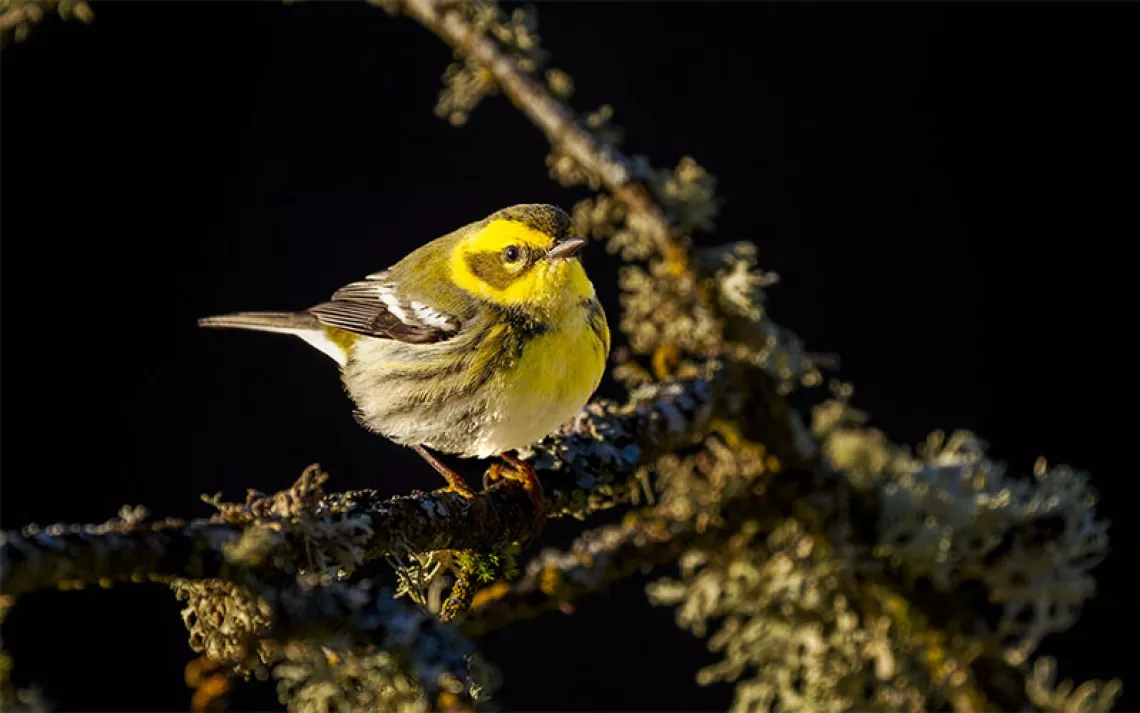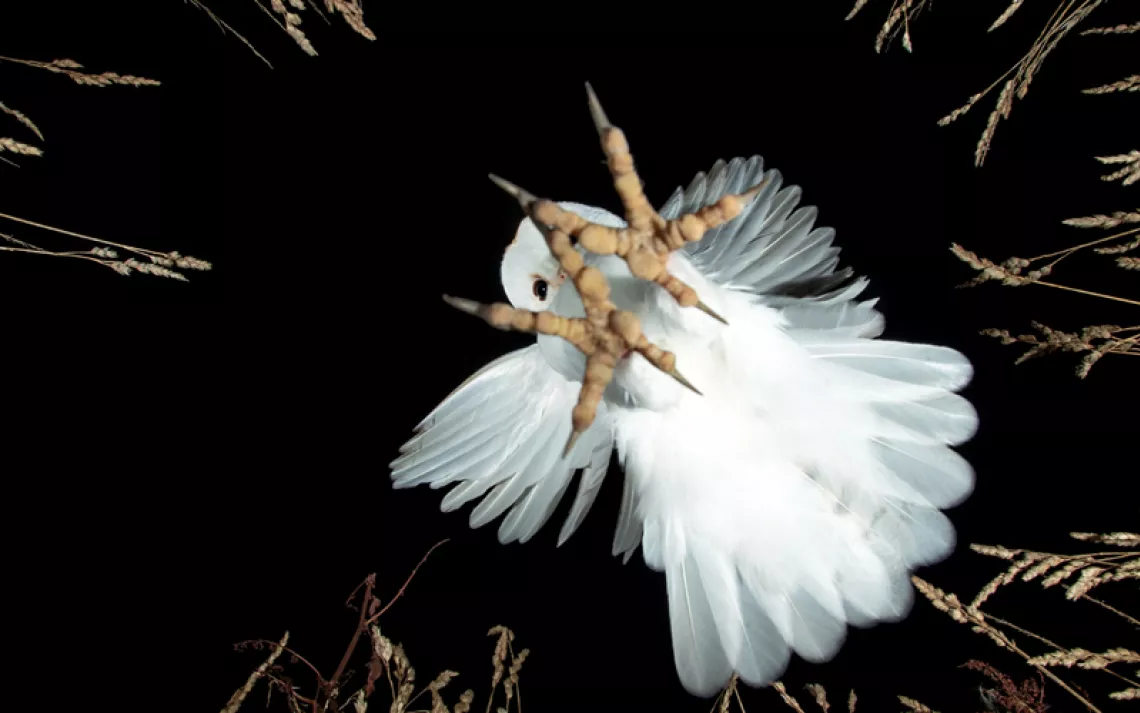How Amy Tan Chose Flight Over Environmental Fury
Inside the makings of an accidental bird portraitist
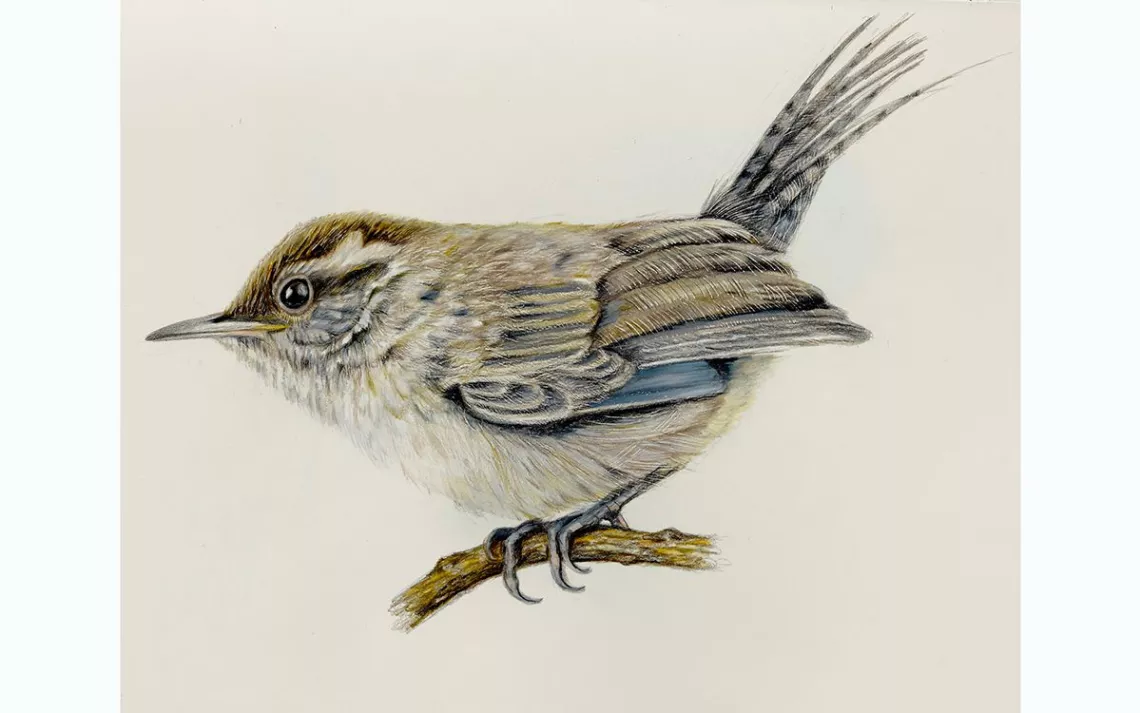
Photos courtesy of Amy Tan
Based on Amy Tan’s childhood experiences with birds, you might expect the best-selling author to run the other way at the sight of anything feathered and beaked.
“My first memory of birds was watching the movie The Birds,” The Joy Luck Club scribe says of the 1963 Alfred Hitchcock horror-drama, which was filmed in Bodega Bay, disconcertingly close—only an hour north—to where she grew up in the San Francisco Bay Area. After that cinema outing with her family, young Amy became wary of any winged animals. “I probably thought that any bird that flew near you would swoop down and try to attack you.” That early filmic trauma made Tan avoid taking any deep interest in sparrows, blue jays, and crows. “Like so many other people, I just thought, ‘There are big birds, there are little birds, and there are brown bids, and that’s just about it,'” she says. “I can’t say I was ever that curious about birds.”
My, how that bird has changed its tune. Sometime after 2016, not coincidentally colliding with Donald Trump’s rise to power, Tan found herself writing lengthy political diatribes that she posted on her Facebook fan page. (Once in a while a reader would counter Tan’s critiques of the White House’s "Dodo-in-Chief" with an angry remark such as, “I will never read your books again!” Tan, who has now published six novels and two memoirs, would retort, “Please don’t read my books—and I don’t believe you ever have read them anyway.”)
Tan, who has been invited to White House dinners by several presidents, including President Obama, was deeply upset about #45’s (or T-Rump’s, as she refers to him in her posts) disregard for the environment, as well as a plethora of other issues. This pervasive anger was so draining that Tan began to yearn for a distraction. Enter the ones who flitted right outside her window: birds.
*
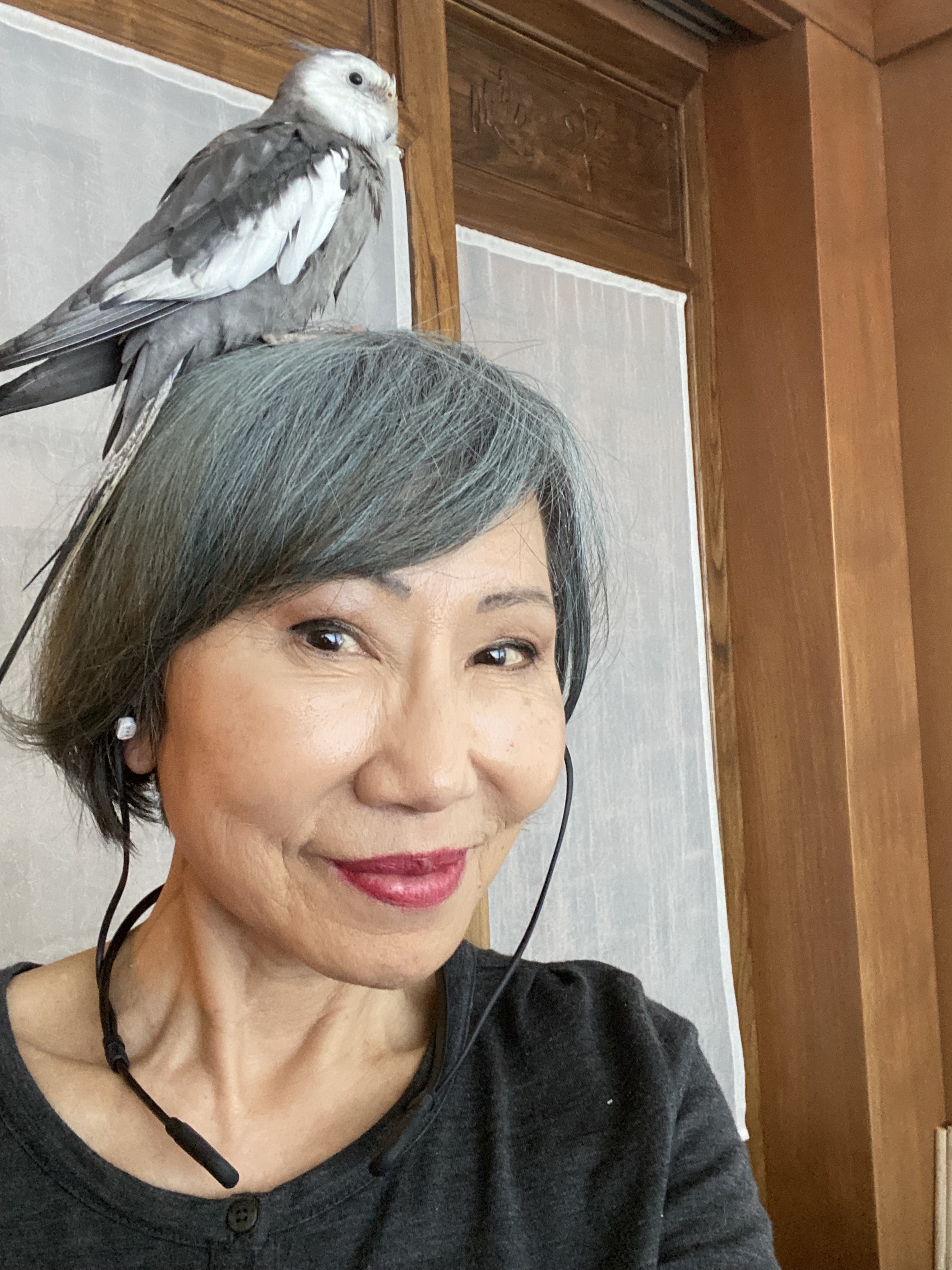 Tan lives in a stunning Bay Area house perched high on a hill—the wood, stone, and glass structure feel like a luxurious treehouse designed by Frank Lloyd Wright (if Wright designed treehouses). With an expansive balcony, the house looks out onto Richardson Bay, and onto Angel Island beyond that. Today, Tan can glance out her window and see dozens of different kinds of birds: “I have identified 56 species in my yard,” she says, a delighted smile gracing her face as she and her terrier Bobo gaze out the tall wall of windows. These neighborhood birds include Dark-eyed juncos, California towhees, Song sparrows, Bewick's wrens, the Oak titmouse, Chestnut-backed chickadees, Golden-crowned sparrows, quail—the list goes on. The author did spot an unusual bird not usually seen in the Bay Area just outside her bathroom window—an American Tree Sparrow. “That bird was way out of range—I think there are only two reports of it in this area in the last tend or twenty years," Tan says. "It is what we call a vagrant. I got a lot of cred for seeing it!"
Tan lives in a stunning Bay Area house perched high on a hill—the wood, stone, and glass structure feel like a luxurious treehouse designed by Frank Lloyd Wright (if Wright designed treehouses). With an expansive balcony, the house looks out onto Richardson Bay, and onto Angel Island beyond that. Today, Tan can glance out her window and see dozens of different kinds of birds: “I have identified 56 species in my yard,” she says, a delighted smile gracing her face as she and her terrier Bobo gaze out the tall wall of windows. These neighborhood birds include Dark-eyed juncos, California towhees, Song sparrows, Bewick's wrens, the Oak titmouse, Chestnut-backed chickadees, Golden-crowned sparrows, quail—the list goes on. The author did spot an unusual bird not usually seen in the Bay Area just outside her bathroom window—an American Tree Sparrow. “That bird was way out of range—I think there are only two reports of it in this area in the last tend or twenty years," Tan says. "It is what we call a vagrant. I got a lot of cred for seeing it!"
It takes a home visitor little time to determine that the 69-year-old has gone a little berserk for birds. In the otherwise pristine living room, there’s a pile containing binoculars, a camera, and other birding paraphernalia. The powder room features colorful bird-emblazoned guest towels. Out on the patio, there are several bird feeders, one of which Amy Tan holds up in the palm of her hand, beckoning her feathered friends.
“I went a little overboard,” she says of her passion to take care of her patio visitors. Case in point: She signed up for a delivery of 10,000 mealworms a week. “I used to serve 1,000 mealworms daily,” she laughs. “I know—it was nuts. But I had so many pairs of birds who came to get the mealworms—they are really beetle larvae. The birds would just come constantly.” As a result, she says, the neighborhood sparrows and wrens flourished. “I’ve seen babies,” she says, contentedly.
Tan’s naturalist odyssey began partially because she worked on her essays and books at the dining room table and noticed that all sorts of birds congregated on her tiled side patio. After one particularly tortured morning of Trumpian politics on the news cycle, Tan picked up a pencil and paper and began sketching one of the creatures perched just beyond her reach.
Tan had been an enthusiastic artist as a child but stopped drawing when a teacher told her she “had no imagination.” Throughout her adult life as a writer, she told herself that one day, when she retired, she would return to drawing. “I imagined I would have a little room in an attic, filled with easels, paints, paper, and a peaceful view of water and trees,” she writes in her foreward to How to Teach Nature Journaling (coauthored by naturalist John Muir Laws and Emilie Lygren, Heyday 2020).
Thanks to Trump, that time came sooner than Tan imagined. The writer re-engaged with her drawing by attending workshops on nature journaling taught by Laws. (Laws, also known as Jack, wrote a guidebook on wildlife in the Sierras and The Laws Guide to Drawing Birds and The Laws Guide to Nature Drawing and Journaling.) After the workshop, Tan realized that although she would never retire as a writer, it was still not too late to learn to draw wildlife. Her latent inner artist was back.
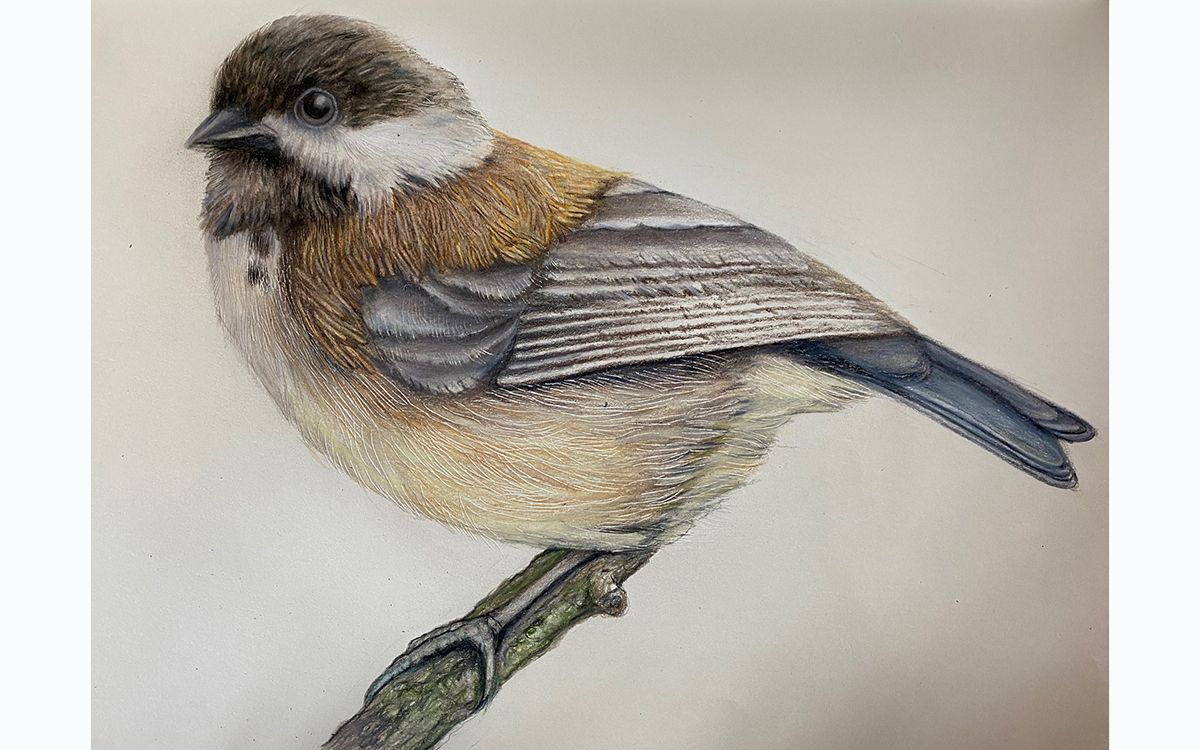 Observing the birds on her patio, Tan practiced Laws’s suggested techniques, putting in her “pencil miles,” as Laws described it. Accompanying the naturalist on field trips, Tan learned that the most important skills she needed to develop in order to capture animals in nature were “the ones I had left behind in childhood—to be intensely curious, to wonder aloud, to see the story in front of me and try to capture an interesting aspect of it in a drawing.
Observing the birds on her patio, Tan practiced Laws’s suggested techniques, putting in her “pencil miles,” as Laws described it. Accompanying the naturalist on field trips, Tan learned that the most important skills she needed to develop in order to capture animals in nature were “the ones I had left behind in childhood—to be intensely curious, to wonder aloud, to see the story in front of me and try to capture an interesting aspect of it in a drawing.
“There is a big difference between drawing a bird with exact details while at home and capturing its essence in the field, in the moment, when it is never still,” Adds Tan, whose drawings are featured to the right and above. “My lively subject moved every second, and that forced me to see it afresh every second, and not based on what I already assumed it looked like. I had to see it as a child who has not seen this creature before. Wonder takes place when everything is new.”
In 2017, she met 13-year-old Fiona Gillogly. Fiona “showed me how to regain my childhood sense of wonder,” recalls Tan, in her foreword to Laws’s How to Teach Nature Journaling. “A page from her journal … shows how our noticing infinite variations in nature enlarges our view of life. On field trips, I noticed that she was excited about everything—and not just the beautiful birds we all saw. She turned over the undersides of ferns as we walked into a woodland forest. She crouched down to show me a clump of California manroot and traced how far the vines extended and coiled around other plants. When making such discoveries in the field, she crammed her pages with questions about mysteries that lead to more mysteries, unmindful that her sentences are never formed in blocks of straight lines, left to right. Her observations flow continuously, curving upward or downward, as if to avoid interrupting her train of thought.”
Laws had been Gillogly’s mentor, and although she is only in her teens, and Tan is 69, Tan says that high schooler Gillogly has become her teacher. From Gillogly’s example and from nature journaling about birds, “I am learning the joys of unbounded curiosity,” Tan writes. “Everything is again new.”
Fiona's mother Beth Kelley Gillogly, who runs the annual Wild Wonder Nature Journaling Conference, says Tan brings something rare to her nature journaling and engagement with wild animals: “Amy approaches nature journaling and birding with a beginner’s mind,” Gillogly told Sierra in an email. “She pays careful attention and watches birds for extended periods of time, noticing very specific details about them and their behavior, getting to know individual birds who visit her yard, imagining their feelings, motivations, and fears.”
*
Tan captures her artistic observations in a large sketchbook, each bird beautifully imagined and wrought. She photographs her subjects and then spends hours scrutinizing their behavior. Fledglings especially captivate her: “They are just leaving the nest for the first time, and they are very clumsy,” Tan says of the newborns who can’t yet fly. “They are usually downy and fat. They don’t know how to feed themselves. They’ll try to fly out of the nest and they’ll land some place. They don’t know how to move so they’ll cry. They just sit there until the parent finally comes. The parents will hold food for them. The bird will just keep screaming."
“There are daily dramas,” she adds, her eyes lighting up. “The more you know and watch, the more you can make sense of these dramas, and the more you have relationships with birds.”
Tan is quick to clarify that she thinks of herself as a bird lover, but not a “birder” in the strict sense. Unlike most diehard birders, she doesn’t count how many species she has seen in her lifetime, or plan to go on a Big Year. She has, however, done some pretty cool bird geek things—she went with her friend Steve Martin (who starred in the iconic birder movie The Big Year) and his wife, Anne Stringfield, to observe birds in Central Park’s The Ramble. Tan also corresponds with novelist Jonathan Franzen—no, not about writing—about birds.
This passion for birds has brought tremendous joy to Tan’s life. “It’s a reason to go out walking,” she says. “It’s a very leisurely activity. You take your binoculars and a sketch pad. You can be out there in nature and be enthralled for hours. It widens your world, and you connect with people."
Why Chronicling Nature Can Make Us (Especially Kids) Better, Smarter Humans
1) “There’s a personal value,” says Tan. “It brings me great happiness and sharpens my sense of observation. It also deepens my appreciation for nature and hence, inspires my conservation efforts. Whether or not it benefits the birds, I’m not really sure. [At my house] they certainly have enough food when nesting, and that may contribute to the number of baby birds being born. Because the fewer times the parent birds have to go out to get food, the more attentive they can be. They don’t have to be away so long, which leaves the nest open to fewer predators.”
2) Nature journaling is something that can actually increase intelligence. “Some of it has to do with attention span, and maybe it also has to do with the development of certain brain matter that is linked to observation and drawing. It’s especially good for kids to get involved.”
3) “It’s an outdoor activity. You can do it looking out the window as well.”
4) “It makes kids curious and ask questions. It makes them find answers as their own little scientists, looking for answers.”
5) “It develops memory. Children remember better what they write down and draw, and they develop better memory skills. And they can apply those memory skills to other areas of life."
6) “Kids will be the generation that are the stewards of our natural world. The more understanding they have of nature, the more likely they will become conservationists in the future."
 The Magazine of The Sierra Club
The Magazine of The Sierra Club


